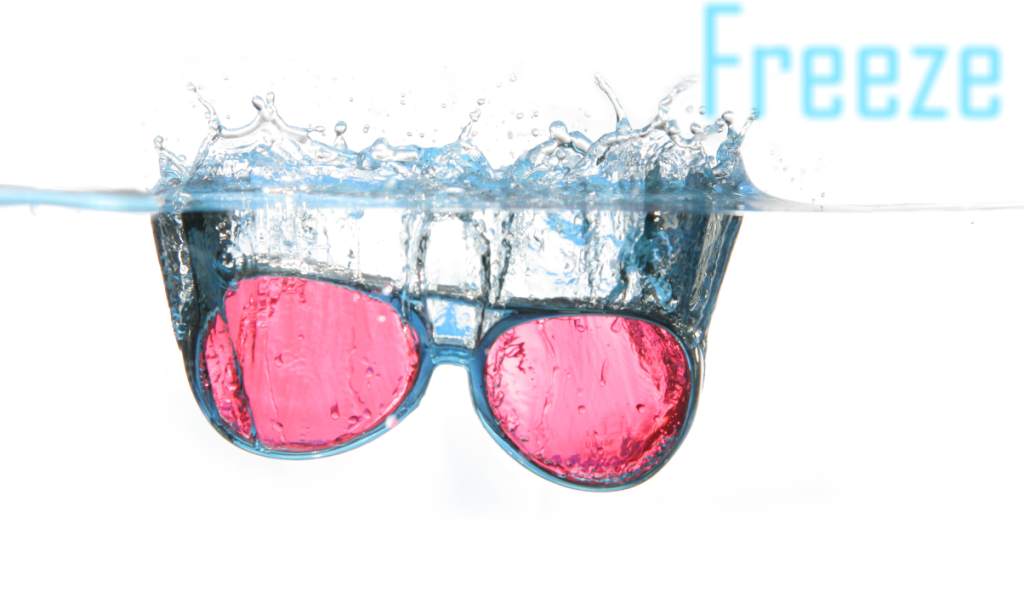Click to Embiggen



Buffalo immersed himself from time to time, in liquid air.
I know we have all wondered, how much liquid air does it take to immerse a human body?
Probably more than you think.
Cooling Buffalo meant transferring his body heat to the liquid air. We will start by computing how much heat had to be transferred. Then we can easily compute how much liquid air it boiled.
First, how far did Buffalo have to be cooled?
When liquid air was dumped on Buffalo's warm body, the cold liquid boiled and kept boiling until his body temperature fell below the boiling point of nitrogen, which is 77K or ‑320F. (By that point, the oxygen had already stopped boiling.)
(If you are feeling stress, wondering whether the author knows that mammals cannot survive freezing, you can relax.)
Before Buffalo reached the boiling point of nitrogen, he passed through the freezing point of water. At that point the water in his body froze, which released quite a lot of heat, which boiled off more air.
Let's compute how much energy must be transferred to reduce his body to the freezing point of water.
Assume Buffalo’s initial body temperature was 310K (99F). To reduce that to the freezing point of water (273K) required a drop of 37K.
How much water did Buffalo contain? By happy coincidence, Buffalo weighed exactly 100 kg, which we will assume was entirely water. (His body was probably not entirely water, but biology was not my best subject.)
Click to Embiggen |
 |
How much heat must be transferred to freeze that much water? The specific heat of water is 4 kJ/kg. That is, cooling 1 kg of water by 1K will release 4 kJ (4000 Joules) of energy. So cooling Buffalo’s 100 kg by 37K released 100 kg × 4kJ/kgK × 37K = 14,800 kJ, all of which must be transferred to the liquid air.
At that point Buffalo froze, releasing more energy, called heat of fusion. For water, the heat of fusion is 334 kJ/kg, so freezing Buffalo released 100 kg × 334 kJ/kg = 33,400 kJ.
Once he froze, how much energy must be transferred to cool him the rest of the way?
The specific heat of water-ice is only 2 kJ/kgK, so cooling Buffalo the rest of the way from 273K to 77K, released 100 kg × (273K ‑ 77K) × 2 kJ/kgK = 39,200 kJ.
Thus, cooling Buffalo to the temperature of boiling air released total energy of 14,800 kJ + 33,400 kJ + 39,200 kJ = 87,400 kJ. All that energy had to be transferred to the (now boiling) liquid air.
But the boiling air also had to cool the ice chamber, an aluminum box 5m square and 4m high. How much energy did that require?
First, how much aluminum had to be cooled? Each of the chamber's walls had a surface area of 5m × 4m = 20m2, while its floor and ceiling had areas of 5m × 5m = 25m2, for a total surface area of (4 × 20m2) + (2 × 25m2) = 130m2.
The ice chamber’s walls and floor were 1mm thick (on top of perfect insulation that can be ignored) so the total volume of aluminum to be cooled was 130m2 × 0.001m = 0.13m3.
In terms of mass, Aluminum has a density of 2.7×103 kg/m3. So the walls and floor massed 2.7×103 kg/m3 × 0.13m3 = 351kg.
(The ice chamber also contained equipment, which we will ignore because, unlike a wall, the equipment had small surface area relative to its volume, so its heat leaked out slowly.)
How far did the aluminum have to be cooled? Fortunately, the chamber was not as hot as Buffalo's body, so it did not have to be cooled as much. Before freezing, Buffalo let the chamber cool to 233K (-40C). From there the liquid air cooled the aluminum down to 77K, a drop of 156K.
How much energy must be transferred to cool 351kg of aluminum by 156K?
The specific heat of aluminum is 0.91kJ/kgK, so cooling the walls and floor released energy of 351kg × 156K × 0.91kJ/kgK = 49,828kJ.
Finally, in addition to its walls, floor and Buffalo's body, the chamber also contained gaseous air, which had to be cooled but not immediately liquefied.
How much air? The chamber’s volume was 100m3=100,000 liters of air.
How much energy must be transferred from the (warm) gaseous air to the (cold) liquid air to match their temperatures? To answer that question it will be simpler to measure the gaseous air in units of moles.
At standard temperature and pressure (STP=298K and one atmosphere) one mole of air (or any other gas) will occupy a volume of 23 liters. So the chamber's atmosphere (100,000 liters) works out to 100,000/23 = 4348 moles of air.
(If you think I cheated because the chamber was colder than STP, then good catch. But it's okay because the chamber contained one atmosphere at room temp. As the chamber cooled, its air pressure dropped but the number of moles remained constant.)
The molar heat capacity of nitrogen is 29 J/(mol K), and oxygen is almost the same, so cooling the chamber's gaseous air released 4348 mol × 29 J/(mol K) × 156K = 20kJ.
Thus the total energy released by cooling Buffalo and his ice chamber was 87,400kJ (his body) + 49,828kJ (the chamber walls) + 20kJ (the atmosphere.) = 137,248kJ. This is the amount of energy transferred to the boiling liquid air.
How much liquid air boiled off?
Click to Embiggen |
 |
The air was 80 percent nitrogen and 20 percent oxygen. Boiling off 1kg of oxygen will absorb 200kJ of energy (this is oxygen’s heat of vaporization) and nitrogen is almost the same at 213kJ. So boiling off 1kg of liquid air will absorb (0.2 × 200kJ) + (0.8 × 213kJ) = 210kJ.
Thus, the 137,248kJ released by Buffalo and his ice chamber boiled off 137,248kJ / (210kJ/kg) = 654 kg of air.
In terms of volume, liquid air has a specific gravity of 0.84, so the liquid volume of 654kg is 654/0.84 = 779 liters, 206 US gallons.
In other words, when Buffalo dumped liquid air on his body, the first 206 gallons boiled off.
When that much air boiled off, how much space did it occupy? This is important, because it pressurized the chamber.
Under normal conditions, the volume of a gas does not depend on the mass of its molecules, only their number, which is conveniently measured in moles. At standard temperature and pressure (298K and one atmosphere) each mole of gas will occupy 23 liters.
How many moles of air were in the 654kg that Buffalo boiled off? One mole of nitrogen molecules weighs 28g, and one mole of oxygen molecules weighs 32g. (Remember they form double-weight molecules, N2 and O2.) So one mole of air (80% nitrogen) weighs about 29g, or 0.029kg. Thus, 654kg of air contained 654/0.029 = 23,000 moles.
How much gas is that? At room temperature (298K), 23,000 moles will expand to a total volume of 23,000 × 23 = 530,000 liters, assuming pressure of one atmosphere.
However, the ice chamber was much colder than room temperature. Charles’ Law tells us that, as a gas cools, it shrinks in proportion to its temperature (in deg K.) So at a temperature of 77K, the air had shrunk to a factor of 77K / 298K or about 25% of its room-temperature volume. Thus the boiling air expanded to a total volume of 530,000L × 77K / 298K = 140,000 liters, or 140m3 (cubic meters) assuming pressure of one atmosphere.
But the ice chamber could not hold 140m3. The chamber is 5m square and 4m high, so its volume was 5m × 5m × 4m = 100m3. What happens when you stuff a 100m3 space with 140m3 of air?
Boyles’ Law tells us that compressing 140m3 of gas into 100m3 will raise its pressure by 140m3/100m3 = 1.4 atmospheres.
Recall the chamber started with 1/4 atmosphere (one atmosphere shrunk to ¼ volume by the cold.) So the ice chamber briefly reached a pressure of 1.4+0.25 = 1.65 atmospheres, until the air cooled enough to liquefy and drain through the scuppers into the cold pit.
Later, when Buffalo warmed he needed air to breathe, provided by evaporation of the liquid air left in his tray. How much liquid air did Buffalo need left in his tray?
We know pressurizing the chamber to one atmosphere required 4348 moles of air, and each mole massed 29g. So the total mass of air was 4348 × 29g = 126kg. Liquid air has a specific gravity of 0.84, so the liquid volume of 126kg is 126/0.84 = 150 liters, or 40 US gallons. This is the amount of liquid air Buffalo needed in his tray after he froze, so he would have something to breathe when he thawed.
In total, the mass of liquid air was 654 kg to freeze Buff and the chamber, plus 126 kg for him to breathe, for a total of 780 kg, which is 1,716 lbs, 655 liters, or 246 gallons.
So Buffalo's air barrel had to hold 250 gallons.
The same equations apply to Luci. She weighed only 40kg, or 40% of Buffalo’s mass, but her ice chamber was the same. Working through the arithmetic, she boiled off 400 kg of liquid air to cool her body and the chamber walls. Her chamber was the same size, so she also needed 126 kg of liquid air left in her tray, to provide one atmosphere for her to breathe when she warmed. So her barrel held 400+126 = 526kg, which is 1160 lbs, 630 liters, or 166 gallons.
